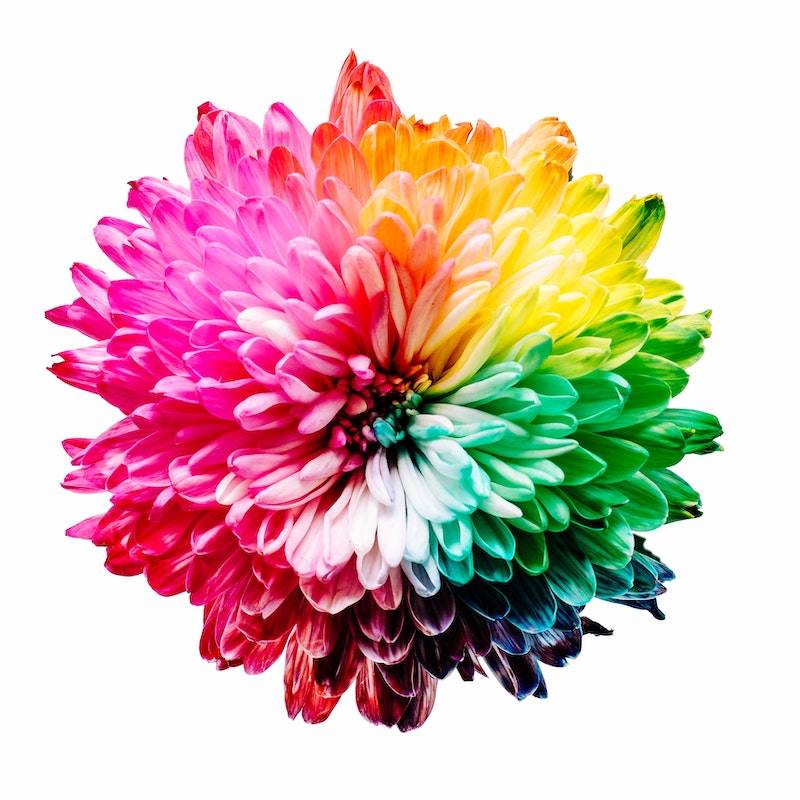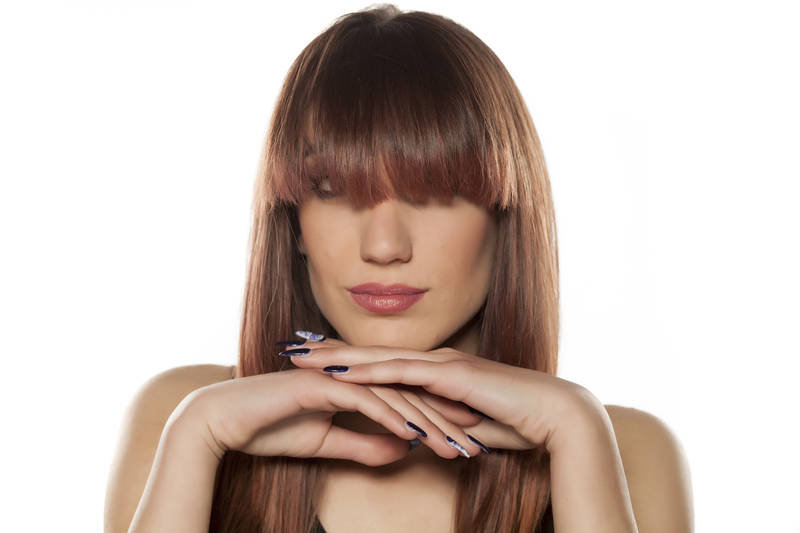Adjectives give flavor to conversation, allowing speakers to give juicy descriptions of events and express their individuality by giving their opinions on things. If your goal is to successfully converse with French native speakers in France, choosing the right adjective could be what really sets your opinion apart!
Learning French adjectives will allow you to add all kinds of richness to your language learning experience, but before you go straight to your vocabulary flashcards, it’s important to take a look at the “recipe” for spicing up your French by adding adjectives.
Note: We’ll stick to the more “traditional” adjectives, like color or descriptions, but note that adjectives can also come in the form of possessives (“my” cat), limiting adjectives (“enough” soup), and demonstrative adjectives (Is “this” yours?).
When Adjectives Change
Gender
All French nouns have an arbitrary “gender” of masculine or feminine, which unfortunately doesn’t follow rhyme or reason and consequently just needs to be memorized.
Knowing the gender of French nouns is crucial to being able to replace it with a pronoun, use the correct article (“the” or “a(n)”), or use an adjective to describe it. The ending of an adjective is usually the only thing that changes to show gender. Depending on the “basic” masculine form, there are several different endings used to make an adjective feminine.
In many cases, simply add an -e to make a masculine adjective feminine. When an -e is added to an adjective ending in a consonant, the consonant is pronounced more strongly. Note that in French, nationalities are not capitalized.
Il est américain. (He is American.)
Elle est américaine. (She is American.)
There are also some irregular adjectives whose forms change more dramatically. For example, the adjective “beautiful” has two distinct masculine and feminine forms. See the table a few sections below for more.
Son mari est beau. (Her husband is handsome.)
Sa femme est belle. (His wife is beautiful.)
Number: Plurality
French adjectives also need to be adjusted to match the noun in quantity, namely whether the noun it’s describing is singular or plural.
Leurs femmes sont belles. (Their wives are beautiful.)
Leurs maris sont beaux. (Their husbands are handsome.)
In many cases, simply add an -s to make a masculine adjective plural and -es for feminine ones.
Les hommes sont contents. (The men are happy.)
Les femmes sont contentes. (The women are happy.)
Gender and Number Changes by Category
Adjectives that end in a silent -e: Fem: do not change formidable (great) moderne (modern) sale (dirty) triste (sad)
Plural: add an -s formidables (great) modernes (modern) sales (dirty) tristes (sad)
Masculine adjectives ending in -é: Fem: add an -e âgé (old) -> âgée fatigué (tired) -> fatiguée
Plural: add an -s âgés (old) -> âgées fatigués (tired) -> fatiguées
Masculine singular adjectives ending in eux change the ‐x: Fem: change -x to ‐se furieux (furious) -> furieuse paresseux (lazy) -> paresseuse
Plural: masc. does not change, fem. add an -s furieux (furious) -> furieuses paresseux (lazy) -> paresseuses
Masculine singular adjectives ending in f: Fem: change -f to -ve neuf (new) -> neuve impulsif (impulsive) -> impulsive
Plural: add an -s neufs (new) -> neuves impulsifs (impulsive) -> impulsives
Masculine singular adjectives ending in ‐er: Fem: change ‐er to ‐ère fier (proud) -> fière premier (first) -> première
Plural: add an -s fiers (proud) -> fières premiers (first) -> premières
Certain other masculine singular adjectives: Fem: double the final consonant before adding the ‐e bon (good) -> bonne gentil (kind) -> gentille
Plural: add an -s (unless it already ends in -s) bons (good) -> bonnes gentils (kind) -> gentilles gros (fat) -> grosses
Common Irregular Adjectives
These adjectives take on new forms when changing to show gender and number.
| English | Masculine | Feminine | Masc. Plural | Fem. Plural |
|---|---|---|---|---|
| beautiful | beau | belle | beaux | belles |
| sweet | doux | douce | doux | douces |
| false | faux | fausse | faux | fausses |
| public | public | publique | publics | publiques |
| new | nouveau | nouvelle | nouveaux | nouvelles |
| fresh | frais | fraîche | frais | fraîches |
| dry | sec | sèche | secs | sèches |
| long | long | longue | longs | longues |
| white | blanc | blanches | blanc | blanches |
| old | vieux | vieille | vieux | vieilles |
| worried | inquiet | inquiète | inquiets | inquiètes |
| favorite | favori | favorite | favoris | favorites |
Sentence Placement
The vast majority of adjectives in French come after the noun, rather than before the noun (as in English).
Le chat noir a marché. (The black cat walked.)
Just like English, adjectives can also come after a verb.
Le chat est noir. (The cat is black.)
After the Noun: All Colors, Shapes, but Not Sizes
Colors, shapes, and nationalities are placed after the noun. As you’ll see in the next section, the physical descriptions of size and beauty are placed before the noun. Notice that nationalities are not capitalized in French.
La femme allemande est ici. (The German woman is here.)

French Colors
Want to make your noun phrases more vibrant? Or perhaps differentiate which item you prefer at a shop? Then colors are essential!
orange (orange) jaune (yellow) bleu/bleue (blue) rouge (red) vert/verte (green) noir/noire (black) marron (dark brown) rose (pink) blanc/blanche (white) gris/grise (gray) violet/violette (purple/violet)

Before the Noun: BANGS
As rules in languages are often more like guidelines, there are of course several important exceptions to the “adjectives come after the noun” rule. Luckily, there is a simple mnemonic acronym of adjectival categories to help you remember a large fraction of them.
B (beauty): beau (beautiful/handsome), joli (pretty) A (age): jeune (young), vieux (old), nouveau (new) N (numbers): duex (two), première (first), deuxième (second) G (“goodness”): bon (good), meilleur (better), mauvais (bad), gentil (kind) S (size): petit (small), haut (high), gros (fat)
The N: Ordinal Adjectives
Adjectives which specify the order in which something happens come before the noun.
La première fois que je l’ai rencontré, c’était lors d’un concert. (The first time I met him was at a concert.)
Elle a publié son deuxième livre. (She published her second book.)
BANGS Exceptions (There are always a few!)
Though these common adjectives fit in the categories above, they come after the noun:
B: laid (ugly), affreux (atrocious) A: âgé (old) G: méchant (mean)
Other “Misplaced” Adjectives
Because these adjectives are so common, you shouldn’t have too much trouble remembering that they don’t follow the noun, even though they don’t fit in with the BANGS categories. Remember that these adjectives need to match the noun they precede in gender and number.
Autre (other):
Avez-vous essayé l’autre vin? (Did you try the other wine?)
Même (same):
Je pensais la même chose. (I thought the same thing.)
Tel (such):
Nous ne devrions pas parler de telles choses. (We shouldn’t speak of such things.)
Faux (false):
Ils m’ont donné de faux espoirs. (They gave me false hope.)
| Tout (all/every) | Masculine | Feminine |
|---|---|---|
| Singular | tout | toute |
| Plural | tous | toutes |
Tout is special because it precedes not only the noun, but also the determiner (the/a/his/her,etc.).
In this example, tout is referring to the noun temps, which is masculine singular. It also precedes the definite article le (“the”):
Il marche tout le temps. (He walks all the time.)
In this example, tout is referring to the noun “l’année,” which is feminine singular:
Elle a étudié toute l’année. (She studied all year.)
Before or After the Noun
Some exceptional adjectives can occur before or after the noun.
Many of these ambiguities are also present with the English words, so think of it as an extra option to make your meaning clearer in French that’s not available in English.
See the list below for the most common adjectives (in masc. singular form) that can be in either place and how their meaning changes:
| Adjective | Before: meaning | After: meaning |
|---|---|---|
| ancien | former | antique, old |
| certain | some | sure |
| cher | dear | expensive |
| dernier | final | previous/last (in expressions of time) |
| grand (for people) | great | tall |
| pauvre | wretched, miserable | poor (monetary), broke |
| prochain | next (in a sequence) | next/following |
| propre | own (shows ownership) | clean |
| seul | only | alone |
| simple | mere | simple |
Using Multiple Adjectives
If both of the adjectives you’re using regularly come after the noun, use et (“and”) in between.
Je ne voudrais pas le sac marron et cher. (I would not like the brown, expensive purse.)
If you’re describing multiple nouns with one adjective, you assume the masculine tense, unless all the nouns are feminine.
Les garçons et les filles américains… (The American boys and girls…)
Which Adjective?
Choosing an adjective from a list of synonyms can be daunting. In your native language, you have developed intuitions about which words “go together” and which ones just don’t “sound right.” This is the reason that only “big,” and never “large,” sounds right before “mistake.”
Without you realizing it, your brain has been keeping detailed statistics about which words it has seen together. This is also how you keep track of what words are appropriate for certain contexts. As language learners, these statistics just aren’t readily available to us. The key to beginning to use adjectives in a native-like fashion is simply gathering data by exposing yourself to as much of the language as possible.
Luckily, your brain will do the tedious part of keeping track of all of those statistics, meaning rather than pouring over spreadsheets, you get to do more fun things like watching films in French or listening to French podcasts or radio stations. Using some structured French instruction, like Lingvist’s online French course, will also give you practice with applying the rules you’ve learned so far about adjectives and quiz your intuitions about appropriate usage. Lingvist is a super fast way to learn vocabulary as well. Sign up today to start learning new adjectives!
Now that you know how to add adjectives to sentences, you’re ready to show off your uniqueness by creating some interesting combinations of adjectives. Who knows, maybe the description you come up with has never been uttered before! C’est cool, n’est pas?


